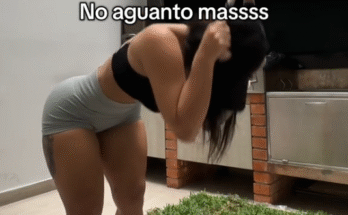Exercise doesn’t always mean lifting weights or running on a treadmill. For many, the most enjoyable form of movement comes with music, rhythm, and joy—dancing. Whether it’s salsa in the studio, hip-hop at the gym, Zumba in a group class, or simply dancing alone in your room, dancing is one of the most dynamic and rewarding ways to exercise.
Dance isn’t just about performance or competition. It’s a full-body workout that improves physical fitness, boosts mental health, and nurtures emotional expression. The best part? You don’t have to be a professional to enjoy it or benefit from it.

The Physical Benefits of Dancing
Dance is a comprehensive form of exercise that engages almost every part of your body. Depending on the style, it combines elements of cardio, strength, balance, and flexibility. Let’s explore how.
1. Cardiovascular Health
Most forms of dance involve continuous movement, which raises your heart rate and improves cardiovascular endurance. Whether you’re jumping, spinning, or stepping to the beat, your heart is working hard to pump blood and oxygen throughout your body. This improves heart health, lung capacity, and overall stamina.
2. Muscle Tone and Strength
Dance works multiple muscle groups. Ballet strengthens the core and legs. Hip-hop engages the lower body and builds coordination. Latin dances like salsa or merengue require strong hips and abs. Even social dances that seem relaxed will help build lean muscle and improve posture over time.
3. Flexibility and Balance
Many dance styles involve stretching and full range of motion movements that help loosen stiff muscles and improve joint health. Dance also improves balance through controlled movement, weight shifts, and coordination of limbs, helping reduce the risk of falls—especially important as we age.
4. Weight Management
Like any aerobic activity, dancing burns calories. Depending on the intensity, you can burn between 200 and 600 calories per hour. This makes dance a great option for those looking to lose or maintain weight without doing traditional workouts.
Mental and Emotional Benefits
The connection between the mind and body becomes especially powerful through dance. It’s not just a workout—it’s an outlet, a release, a form of expression.
1. Stress Relief
There’s something incredibly freeing about moving your body to music. Dance allows you to release built-up tension, forget your worries, and focus on the present moment. The rhythmic nature of music paired with movement helps reduce cortisol (the stress hormone) and boosts endorphins—your natural mood elevators.
2. Improved Mood and Self-Esteem
Dance can boost self-confidence. As you learn new steps and improve your coordination, you begin to feel more capable and comfortable in your own body. Group dance classes also foster a sense of belonging and community, which is especially beneficial for emotional well-being.
3. Cognitive Benefits
Dancing is not just physical—it’s mental too. Remembering choreography, keeping time with the music, and reacting to rhythm all engage your brain. Studies show that regular dancing can improve memory, increase attention span, and even reduce the risk of cognitive decline as you age.
Dance Styles as Exercise
There’s no one-size-fits-all when it comes to dance. That’s the beauty of it. No matter your age, experience, or fitness level, there’s a dance style that will suit you.
Zumba
One of the most popular fitness-based dance classes, Zumba combines Latin music with cardio moves for a high-energy, party-like experience. It’s perfect for those who want a structured, yet exciting, group workout that torches calories.
Hip-Hop
Fast-paced and high-intensity, hip-hop dance builds strength, stamina, and coordination. It’s especially appealing to those who love street dance culture and powerful beats.
Ballet
Though often seen as delicate, ballet is incredibly physically demanding. It builds core strength, balance, flexibility, and mental focus. Many adults take beginner ballet for fitness purposes, enjoying the elegance and discipline it brings.
Jazz and Contemporary
These expressive forms of dance combine athleticism with creativity. They improve agility, flexibility, and emotional expression. Classes are often structured with warm-ups, technique drills, and choreographed combinations.
Ballroom Dancing
Styles like the waltz, foxtrot, and tango not only improve balance and posture but also offer a social and romantic element. These dances are especially popular among older adults looking to stay active and connected.
Dance Aerobics
These workouts fuse traditional aerobic moves with dance steps. They’re often easier to follow than choreographed routines and are perfect for beginners who want a fitness-focused dance experience.
Dance at Any Age
One of the best things about dancing as exercise is its accessibility. Children naturally express themselves through dance. Teens and young adults often turn to dance for creativity and social interaction. And older adults find joy and mobility in low-impact styles like ballroom or line dancing.
With modifications, dancing can be tailored for people of all fitness levels and physical abilities—even for those with mobility limitations. Seated dance classes, for instance, offer a way to stay active and engaged from a chair.
Getting Started
If you’re new to dancing or returning after a break, getting started is easier than you think. You don’t need fancy clothes or a lot of experience. All you need is music, space, and a willingness to move.
- Take a class – Many gyms and community centers offer beginner-friendly classes in various styles. Virtual options also make it easy to dance from home.
- Follow online videos – YouTube is filled with free tutorials and full-length dance workouts for every style imaginable.
- Join a friend – Dance is more fun with company. Invite a friend to join you in a class or have a dance party at home.
- Be patient – Don’t worry about being perfect. The goal is to move, enjoy, and feel good.
A Lifestyle of Joyful Movement
When you shift your mindset from “I need to work out” to “I want to dance,” everything changes. Dance turns exercise into celebration. It’s a way to reconnect with your body, celebrate what it can do, and find joy in movement.
Consistency is key, but so is having fun. The more you enjoy your workouts, the more likely you are to stick with them. Dance has the unique ability to blur the line between fitness and fun, making it one of the most sustainable forms of exercise.
Conclusion: Let the Music Move You
Whether you’re dancing to the rhythm of your favorite song in the kitchen or sweating it out in a Zumba class, every step, twirl, and jump contributes to a healthier, happier you. Dance is exercise for the body, but it’s also nourishment for the soul.
So next time you hear a beat you love, don’t hold back. Move your body, raise your heart rate, express your emotions—and call it what it is: a powerful, joyful form of exercise.



